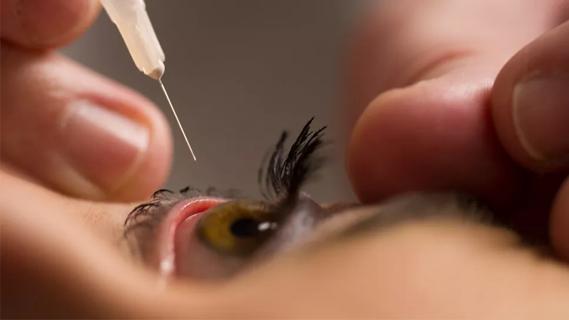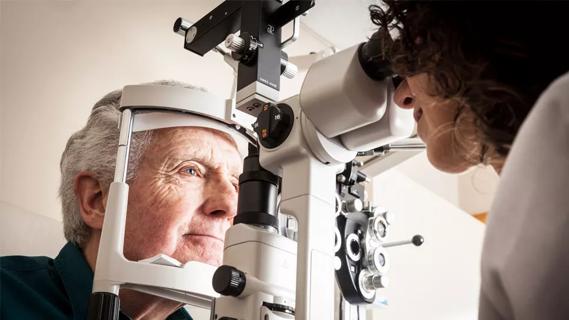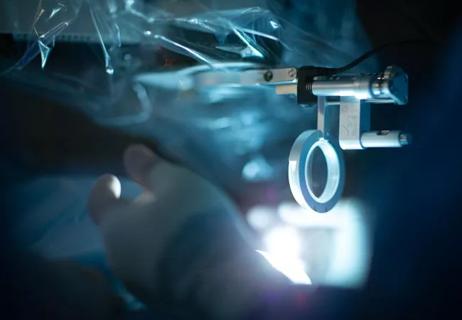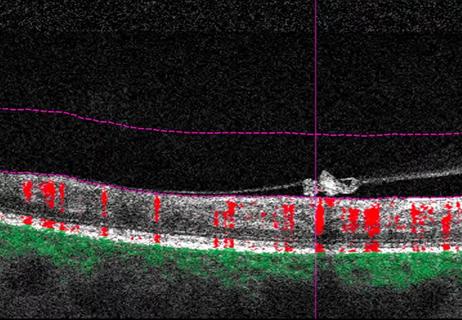Strategies for maintaining dilation during surgery

Flomax is an alpha-blocker commonly prescribed to treat benign prostatic hyperplasia (BPH), a condition that affects nearly three out of four men by age 70. It’s also used to control blood pressure, or treat kidney stones or urinary problems in women. It relieves symptoms by targeting receptors that relax smooth muscles along the urinary tract. Unfortunately for ophthalmologists, it also relaxes the iris dilator muscle.
Cleveland Clinic is a non-profit academic medical center. Advertising on our site helps support our mission. We do not endorse non-Cleveland Clinic products or services. Policy
“If a patient is taking Flomax, their ophthalmologist needs to know that prior to cataract surgery,” says ophthalmologist Wynne Morley, MD.
A large percentage of patients who take Flomax — anywhere from 33 to 75 percent — experience intraoperative miosis, constriction of the pupil, iris prolapse and/or iris billowing. “This is a medication that can cause intraoperative floppy iris syndrome (IFIS). It can lead to poor outcomes or complications during cataract surgery,” Dr. Morley says.
Moreover, Flomax isn’t the only prostate drug that can cause problems. Others include Uroxatrol and Hytrin. Cardura, which is used as an anti-hypertensive as well as for benign prostatic hypertrophy, is also an alpha-blocking agent.
Advising patients to stop Flomax or other alpha-blockers prior to surgery may be of questionable value.
According to Dr. Morley, the problems during cataract surgery — including those with the iris dilator muscle — can occur within two weeks after a patient starts Flomax, and the effects can linger for years, even after the drug is discontinued.
“Ideally, it would be nice if a patient with cataracts saw their ophthalmologist before being started on an alpha-blocking agent,” says Dr. Morley. “Unfortunately, most people go to their urologist first, get put on these drugs, and then come in for cataract surgery.”
Dr. Morley says poor dilation of the pupil and an irregular pupil shape can be signs that a patient is taking an alpha-blocker and is at risk for IFIS. “A pupil dilation of less than 6 millimeters has a high association with severe IFIS during surgery,” she says.
A 2005 study found that Flomax patients had as much as a 70 percent risk of vitreous loss during cataract surgery. Two years later, after surgeons learned that they needed to know about prior Flomax use, the rate of complications dramatically decreased.
A preparation developed by the late Joel K. Shugar, MD, MSEE, an intracameral injection of preservative- and sulfite-free epinephrine mixed with 4 percent unpreserved lidocaine, has helped decrease the risk of pupillary constriction during surgery. “The pH is near neutral,” says Dr. Morley, “so it doesn’t irritate the conjunctiva prior to surgery and helps maintain the patient’s dilation during the operation.”
Other helpful techniques include the use of a longer, self-sealing incision, a thicker viscoelastic and less aggressive aspiration settings on the phacoemulsification machine. If the pupil is small and the cataract is dense, the anterior capsule is sometimes stained with trypan blue. Dr. Morley also suggests surgeons consider using iris retractors and/or a Malyugin ring to keep the iris dilated during surgery.

Study highlights the value of quantitative ultra-widefield angiography

Switching medications may decrease treatment burden and macular fluid

Interventions abound for active and stable phases of TED

Corneal imaging and interpretation play a major role

Effect of low-dose atropine and dual-focus contact lenses is unknown in patients with comorbid eye conditions

How to screen for and manage treatment-triggered uveitis

Minimally invasive surgery is effective for uveitic and steroid-induced glaucoma too

Why retina specialists should get comfortable with this imaging tool